The word “elephant” conjures up an image of something gigantic. Well, the elephant ear betta has enormous fins and tail that resemble the ears of the elephant. It is from this fact that it derived its name. Without a doubt, the fish is extremely extraordinary and is a darling of many hobbyists.
Also referred to as the Siamese fighting fish, elephant ear betta belongs to the family of the gouramis. It is an aggressive fish, with the males known to take the lead in attacking even their own species. This makes it impossible to house two males in the same tank.
Table of Contents
Elephant Ear Betta Care
The elephant ear betta fish is extremely aggressive, so you must not house two males in the same tank. You need a 20-gallon tank for them to thrive, as well as a minimum temperature of 75°F. These fish have long fins, so they need smooth rocks in the tank.
Elephant Ear Betta Fish Overview
According to experts, these small fish species are quite easy to take care of, but first, you need to set the fish tank properly. Elephant Ear Bettas are carnivorous, making it very challenging for you to add other fish species to the aquarium.
Setting the tank is prevalent if you plan to keep male bettas and other bright-colored fishes together. However, sometimes, they can behave aggressively towards other fishes.

But the fact that these species come in different color options is a major reason behind their popularity. Bettas are an ideal species to opt for as a way to brighten up your fish tank. Bettas should not be kept in larger fish tanks or with other fish species.
When you combine all such benefits with the price, Elephant Ear Bettas become quite affordable fish, and anyone can add them to their aquarium.
However, don’t take them for granted. If you fail to provide Elephant Ear Bettas with all the required things, their health will deteriorate and cause death.
| Information Chart | Elephant Ear Betta |
|---|---|
| Scientific Name: | Betta splendens |
| Family: | Gouramis |
| Care Level: | Low to medium |
| Temperament: | Aggressive |
| Color Form: | Blue, Gray, dull green, Red, Brown, and Pink |
| Lifespan: | One to three years |
| Size: | 2.5 inches |
| Diet: | Mosquito larvae,crustaceans, brine shrimps, fish pellets, and insects |
| Minimum Tank Size: | 5 gallons, but always go for a larger one |
| Temperature | 75 to 82 degrees Fahrenheit |
| Water Condition | 6 pH to 8 pH |
| Tank Set-Up: | Smooth rocks, freshwater plants, and a fine sand substrate |
| Tank Mate Compatibility: | Snails, Corydoras, Ember Tetra, Female Bettas, and Harlequin Rasboras. |
Appearance of Elephant ear Betta
Elephant ear betta has very interesting characteristics. They include a huge fin that resembles the ears of the elephant, which aid the fish during swimming expeditions. Like all other betta fishes, elephant ear bettas have brilliant colors that are more pronounced in aquarium species than in the ones found in their natural environment.
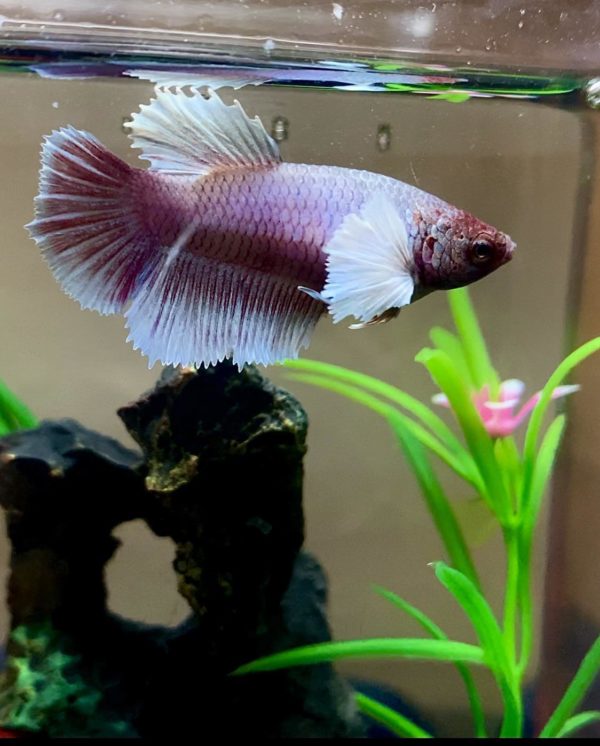
Most fish in natural habitats exhibit Grey, dull green, and brown colors. However, they display various bright colors in captivity, including blue, light green, yellow, red, and even pink. They grow up to lengths of about 6.5cm when mature and have a slim profile against flowing fins that sometimes appear bigger than the actual body.
Life Span For Elephant Ear Betta Fish
Elephant Ear Bettas is a long-lived fish species. As per the experts, when kept in a good environment, they can easily live around three to five years. They have also been known for living up to 10 years.
Their lifespan depends on how well or ill they’re treated by the aquarists. Fulfilling the Elephant Ear Bettas’ requirements will greatly contribute to their lifespan. Don’t forget to watch their food and living conditions, as these factors can affect your bettas’ longevity.
Elephant Ear Betta Fish Size
As per different studies, Elephant Ear Bettas can grow up to 6.5 cm once they are completely mature. They have a slim profile, and because of their flowing fins, they appear bigger than their actual body size. So, it is advisable to keep them in an aquarium where they can get enough space to swim freely while spreading their fins.
Natural Habitat And Origin
It is native to the Asian waters of Vietnam, Thailand, and the Mekong Delta. It mostly exhibits standing waters found in floodplains, canals, and rice paddies.
It found its way to the aquarium due to its aggressive disposition.
The fighting spirit of the fish enthused King Rama III of Malaysia. After collecting some of the fish, he gave a few of them to a man. The same man later gave them to a medical scientist named Theodore. One thing led to another until the fighting fish was finally named Betta Splendens.
Currently, the IUCN lists elephant ear betta as a vulnerable fish.Most of its habitat is polluted, with some getting cleared to pave the way for construction.
Behavior And Temperament
Even though the temperament of your Elephant Ear Batt can vary, these species are aggressive in nature. Compared to females, males are more aggressive, and in the same tank, it is not advisable to keep more than one mal. But in a single tank, you can keep more than one female along with certain other fishes. For this, make sure that you are using at least a 20-gallon tank.
Elephant Ear Betta Care And Tank Setup
Although betta fishes are known to be super hardy fish, you will still need to provide the right environment if you want to see your dumbo betta thrive. For a start, you should have a tank that is 20 gallons or more. Smaller tanks are likely to lead to health issues that may cause the fish trauma that could lead to its death.
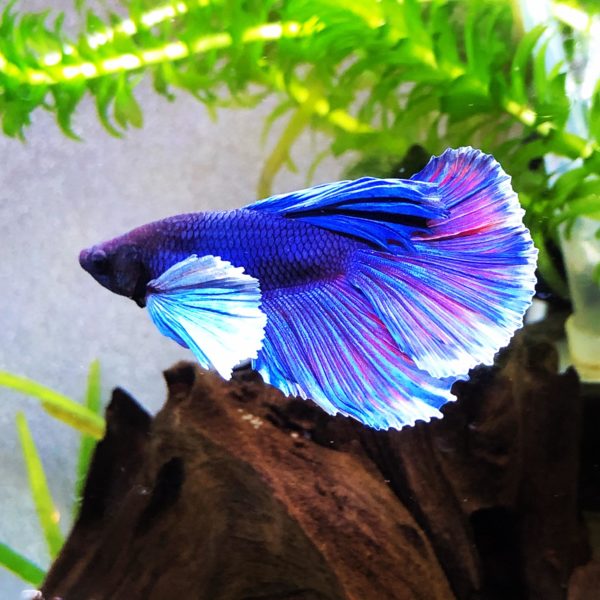
Water temperatures of between 24 and 28 degrees Celsius or 75-82 degrees Fahrenheit should always be maintained. Aquarium heaters for the aquarium should therefore be available more so during cold seasons. You should also test and ensure the water has a neutral pH of 7.
Due to the extended flowing fins, you should choose smooth rocks that will not interfere with the flowing tails and fins. As the fish swims, rough rocks may tug at the tails and this could lead to fin rot which mostly affects aquarium fish.
Fine sand or substrate should be added at the bottom of the tank. Live hardy freshwater plants are a necessity to the tank too. Apart from adding to the beauty of the aquarium, plants also provide a sense of security to the fish. Remember to have plants without pointed extensions that will not interfere with the fish tail and fins.
Elephant Ear Betta Fish Tank Size And Specification
Some people believe that Elephant Ear Betta can easily survive in a small container as they are small species. But remember that offering them a small space can cause more harm than good and create health issues in the future.
If you want to keep your bettas happy and healthy, it is crucial to use a tank size that matches their requirements.
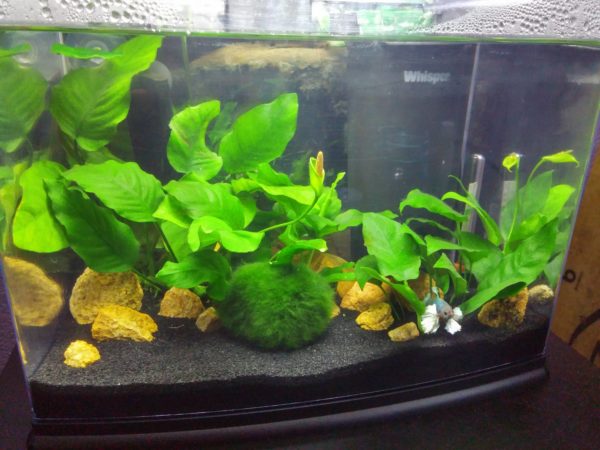
As per the experts, the recommended tank size for your Elephant Ear Betta is around a 5-gallon tank, or you can also go for a larger size. If you have a sufficient budget, it will be better for you to get a 20-gallon tank. This way, you can offer enough space to roam around freely.
Another important thing to consider is getting a tank that is not too deep.
Elephant Ear Bettas love to live in shallow water as they come with a labyrinth organ that enables them to breathe air on the water surface easily.
Tank Shape
Like other species, Elephant Ear Bettas also prefer to live in a longer tank. One of the major reasons behind this is that in the wild, they are used to shallow water types. Besides, bettas always like to have wide territories. On the other hand, a longer tank will allow them to swim freely. Tall tanks are also good for the aquarists who prefer the horizontal space for aesthetics, viewing and aqua scaping. Don’t forget to add live plants, such as anubias, as well as floating plants to the aquarium. Most of the aquarists use large tanks for their bettas as offering more space you can lower the aggression level.
Optimal Tank Size For Elephant Ear Betta
The optimal size for Elephant Ear Bettas at the start is 20 gallons and more.
Ideal Water Temperature
Most professional aquarists have advised that you keep the water temperature between 72 to 82-degree F to keep your fish happy.
Elephant Ear Bettas are native to Asia and are tropical fish. That means you should get a good water heater for the tank. You should check the aquarium water frequently by utilizing a thermometer to ensure that the fish’s temperature is right.
If you change that water, make sure that the new water is as warm as the required temperature. Keep in mind that abrupt changes in water temperature can shock your bettas, which is not good for them.
Water Parameters For Your Elephant Ear Bettas
ph Level
Water pH Levels- 6 to 8
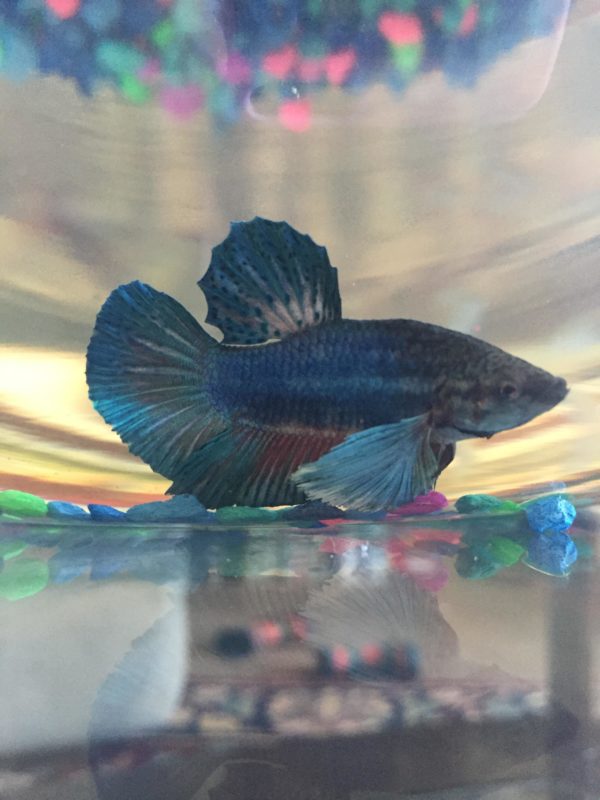
Water Temperature
Water Temperature- 75 to 82-degree F
Water GH
Water GH- 3 to 4 dGH
Filtration
Wondering whether your Elephant Ear Betta needs a filter? Well, the answer is Yes—bettas like clean water. Poor water quality can lead to their death, and they can even suffer from different health issues, like bacterial infection, fin deterioration, and more.
Using a filter, you can easily prevent the buildup of microorganisms and organic residues. Besides re-cycling your tank water, prefer using a filter that also oxygenates the tank water. However, there are certain things that you should keep in mind while buying a filter for your Elephant Ear Betta.
They are very sensitive to string and fast water flow. The Betta will have difficulty swimming if the current is really strong.
Besides, you should go for a filter with a good cartridge system that can make removing and replacing the chemical, biological or mechanical stages easier.
You can take the help of an expert if you think it is challenging to buy a good filter system.
Substrate For Elephant Betta Fish Tank
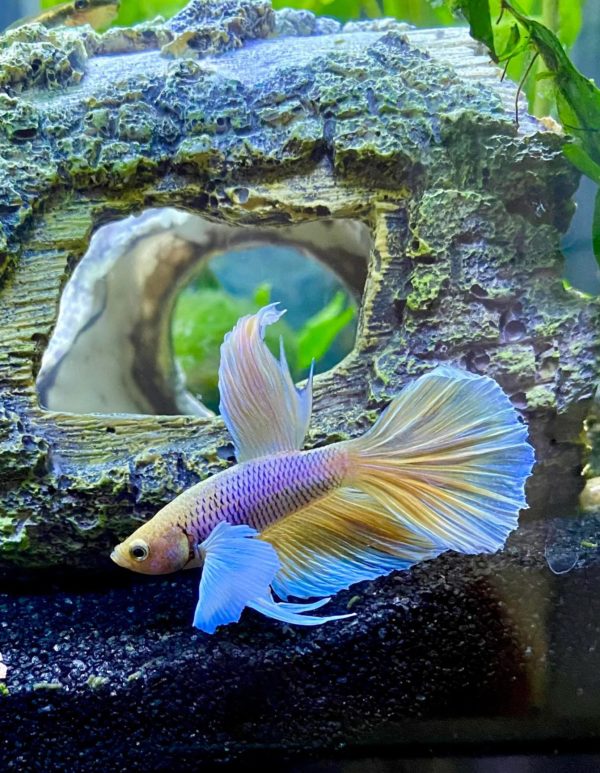
Marble Substrate:
Some betta keepers prefer to use marbles to cover their tank floor. Well, this is not an ideal choice for the fish; using this, you can enhance the look of your fish tank. But remember that these substates can accumulate wastes and debris, and you will have to clean the water frequently.
Soil Substrate:
If you want to use live plants in your aquarium, then using soils can be a good option for you. However, to keep the tank water column clean, you may need to use secondary material, like gravel. As Elephant Bettas are labyrinth fish, soil can keep your fish healthy and happy.
Gravel Substrate:
Some betta keepers think that this is the best substrate. Gravel substrate can be used to create a perfect home where beneficial bacteria can grow. Besides, these substrates are very easy to clean. If you are planning for using an under gravel filter, then this is a good option for you. On the other hand, it allows you to choose from different color options.
Sand Substrate
Sand for bettas is a good choice as it has a natural appearance. This is a perfect option to keep the wastes and debris atop the substrate. However, if you want to use it, then you will have to go for raking to eliminate Hydrogen Sulphide dead zones.
Elephant Ear Betta Fish Tank Decorations
There are two major parts of Décor in Elephant Ear Bettas: hardscape and plants.
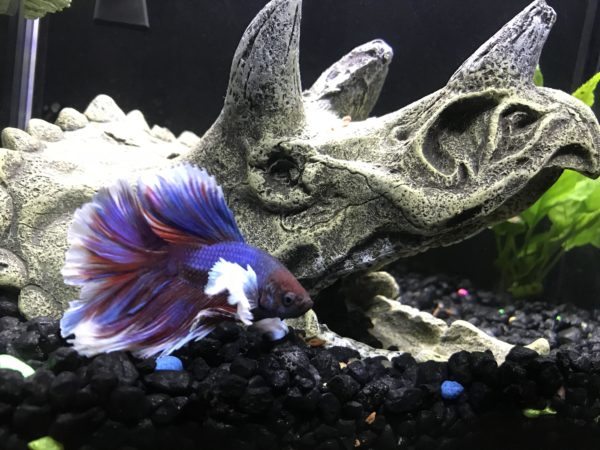
For plants, for example, artificial plants, you will have to be very typical of what you want to put in your Elephant Ear Betta tank. The specifically designed silk plants are very gentle on your Bettas. Experts suggest using Silk plants, such as the Marina Naturals Plants. Plastic plants are not safe for the Elephant Ear Bettas due to their sharp edges. For example, your fish might run into these plants and hurt themselves if the tank isn’t spacious.
These plants can even damage your fish fins and tear them up, leading to infection. As your primary concern is to avoid harm, you should abstain from choosing plastic plants for your aquarium.
On the other hand, for tank hardscaping, such as rocks, you should watch out for rocks with sharp edges. The objects should be round and soft. Besides, you should be able to move your finger through them comfortably. If the tank has rocks, then prefer to sand them down or completely change them.
Besides, it is not advisable to use hardscaping with small holes. They can get stuck or get stuck in those holes. Experts have suggested using smooth, round rocks and objects with large holes.
Feeding Elephant Ear Betta
The fish feeds on a variety of foods. The most common ones are mosquito larvae, zooplankton, crustaceans, bloodworms, brine shrimp, fish pellets and other types of insects. The fish is classified as insectivorous and is likely to restrict its diet to insects and other fleshy meals. It may consume vegetables thrown in the tank for the tankmates when housed with other fish species that eat veggies.
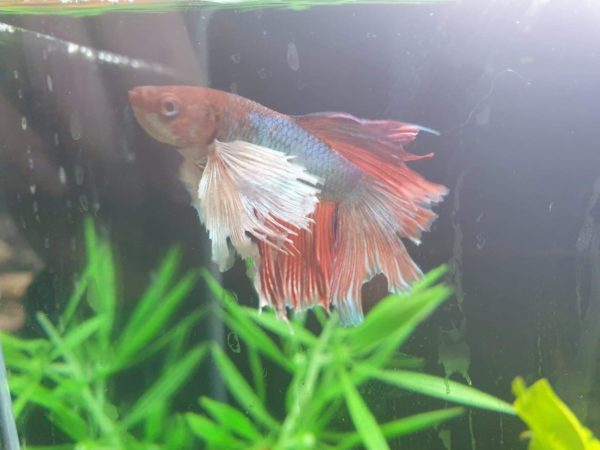
A hobbyist decides on the feeding timetable for the fish. While you’re at it, make sure to feed the fish well to keep its vibrant colors. When poorly fed, the bright colors tend to be dull, lessening its allure.
Some basic betta food
Pellets
Pellets like New Life Spectrum and Omega One are some of the most popular choices among the Elephant Ear Betta keepers. These foods are rich in protein, and they can easily digest this.
Flake Food
Flake foods are not a good option for your Bettas, and they come with different fillers. Using them for a long time can lead to bloating.
Frozen Food
For example, frozen bloodworms are a favorite option for your Elephant Ear Bettas. Some even use them as a primary food source, but some offer them as a treat. However, you should offer frozen food to your Bettas.
Freeze-dried
You can feed your bettas Daphnia, Brine Shrimps, and Bloodworms as an occasional ideal treat. Try giving them freeze-dried worms or shrimps when your bettas get bored of the regular diet.
Live Food
Sometimes you can offer live food, like baby brine shrimps. It is a common food for your betta fry. Some other live foods that you can use are blackworms, daphnia, grindal worms, and bloodworms.
Talking about the ideal feeding schedule, most betta keepers prefer to offer small amounts of fish food twice a day. For instance, every meal should have 4 to 6 pellets. Some owners also prefer to choose to fast their fish at least once a week.
How Often Should You Feed Your Elephant Ear Bettas?
As per the experts, one should feed the Elephant Ear betta twice per day. But make sure that you have the right type of filter installed in your fish tank to feed your fish that much. Besides, experts also suggest having your fish fast for a day each week. This is good for your bettas’ digestion system. A morning and evening sprinkle will be enough for your fish.
How To Feed Your Bettas?
You can defrost the food in a small cup using tank water if you are offering frozen food. If you drop the food in frosted, then it can be difficult for your fish to consume it.
Breeding Elephant Ear Betta
Like most fish kept in captivity, the elephant ear betta is hard to breed in an aquarium. This should not deter a hobbyist from trying to breed it all the same.
Breeding times for the elephant ear betta can be quite an interesting episode to observe. Some scenes to expect include:
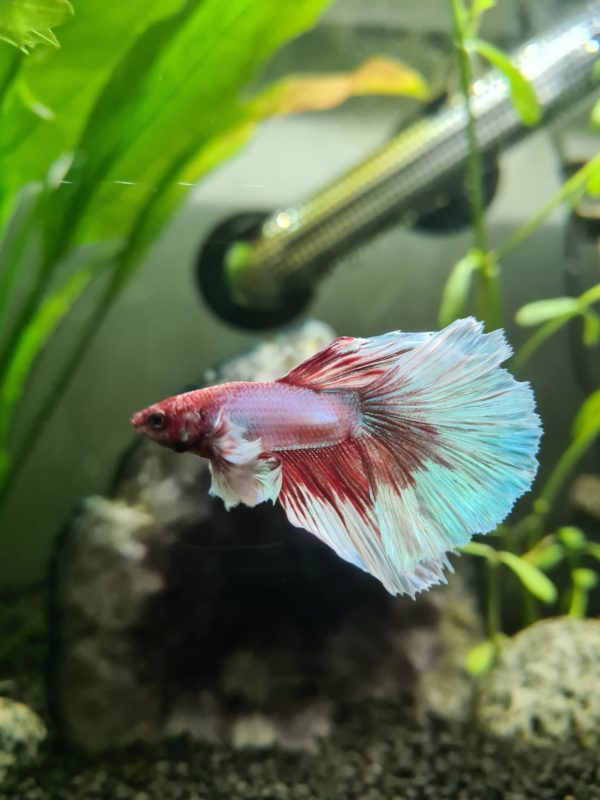
- Males flaring up their gills while spreading out fins in a dance-like manner to capture the attention of the females.
- The interested female darkens its color to confirm its readiness. At this juncture, breeding bars in the form of vertical lines appear on the body of the fish.
- The male builds several nests on the water surface as it prepares a place for the female to lay eggs.
- The male then wraps itself in a tight embrace around the female. This is referred to as “nuptial embrace”. Each time it does this, the female sprays eggs in the nests. This happens until there are no more eggs left.
- The male then releases milt into the water to have the eggs fertilized.
- The male then collects any eggs it considers to be sinking in its mouth to deposit into the nest. The female assists the partner but usually eats away eggs that it manages to catch.
- The male then sends away the female to save some of the eggs. At this juncture, it is important to take the female away from the tank as the male may end up killing it to save eggs.
- After about 24-36 hours, larvae remains in the nest until yolk sac gets fully absorbed.
- Another few days and fry begin to swim freely in the water.
Encouraging Your Elephant Ear Bettas To Breed
First of all, you need to set up the right type of breeding tank based on the recommended tank requirements. Once done, you need to choose a species you want to breed your Betta with. You should make sure that your Betta is in good condition and healthy.
As per the experts, you should go for a bigger female for a smaller male. This way, you can ensure a higher success rate.
Now, introduce the female and male fish to each other. The male will flare the fins and will try to attract their partners. During this, the male will begin creating a bubble nest. If this is successful, the female Elephant Ear Betta will lay eggs.
Well, to allow them to breed, you need to maintain the water temperature and don’t forget to make sure that your tank has enough space to allow them to rest.
Elephant Ear Betta Common Diseases And Their Treatment
Every betta owner is said to have some kind of illness or disease. Some diseases among Elephant Ear Betta are very common, such as fin rot, and some are rare, like necrosis or mystery rot. Now, let’s look at some illnesses that affect your Elephant Ear Betta.
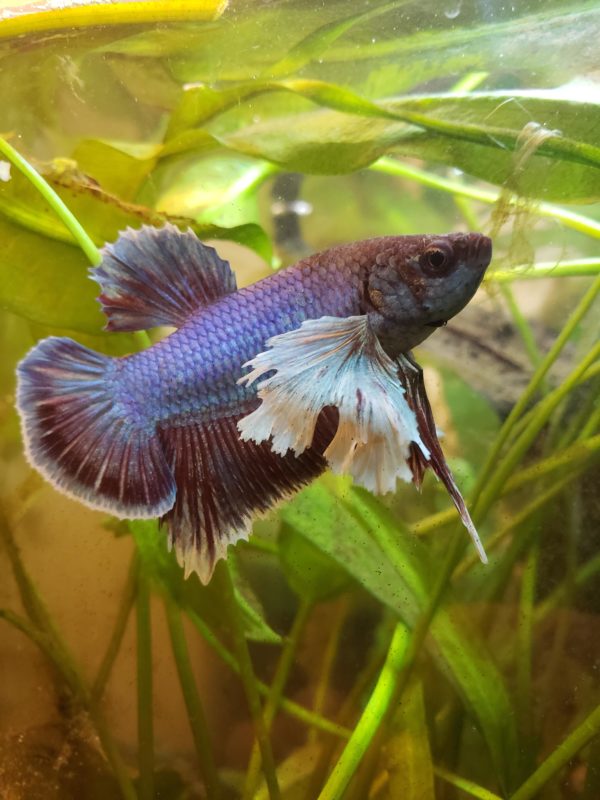
Bacterial Infections
- Popeye
- Pinhole rot, fin rot or fin melt
- Septicemia
- Columnaris
- Parasitic Infections:
- Velvet
- Gill flukes
- A white spot, ick, or ich
- Costia
- Anchor worms
Fungal
Fungal infections are very rare, and most betta keepers mistake it for a bacterial infection.
Some Other Diseases To Consider
- Bloating
- Dropsy
- Mystery rot
- Swim bladder issues
- Mystery bloat
- Fatty liver diseases
- Tumors/cysts
- Hole in the head
- Tail-biting issues
- Blindness
How To Treat Common Diseases?
It is crucial to remember that one of the most common reasons for illnesses is poor water quality. So, it is advisable to check the water quality properly and maintain a good cycle. Don’t forget to change the water frequently and check the water parameters. You can use a good quality water testing kit, for example, API Freshwater Master Test Kit.
If you don’t know what sort of illness your Elephant Ear Bettas are suffering from, don’t give them any medication. Remember that medications can be hard on your fish, and using them for a long time can develop resistance. Besides, you should avoid products like Pimafix, Bettafix, and Melafix.
Tankmates
The fish is very aggressive even to its own reflection in the glass. It is not uncommon to find it clawing at the glass tank when it spies its own reflection. For safety purposes, it pays to keep just one fish in a tank until it is time for spawning. If you really have to add in into a community tank, ensure that your aquarium is big enough for other fishes to swim around and hide.
- Snails
- Shrimp
- Corydoras
- Plecos
- Schooling Fish
Snails are the best test tank mate, and they are the low risk to add to your tank with Elephant Ear Bettas. After adding the snails, carefully observe your fish. If it starts nipping at the snails’ antennas, your fish may not accept any tank mates.
Interesting facts about the fish
- It is known to flare its gills to impress tank-mates. This also happens when any slight change has been made to their environment. When agitated, the elephant ear betta displays horizontal bars that become pale.
- Being unique aquatic animal, many people place bets on bettas when the same sexes are housed in the same tank to start a fight. The fight may continue until one of them becomes submissive and bows out. In case this does not happen, the stronger may claw the other to death. The elephant ear betta is quite some catch for the home aquarium. The delightful colors make it an even perfect consideration.
- These species get their name from the warriors’ clan called the Bettah, and these species are also known as fighting fish.
- An elephant Ear Betta living in a tank can eat all types of food, from pellets to flakes. Besides, they also eat different frozen foods such as daphnia, brine shrimp, and bloodworm.
- All the Betta species have a Labyrinth Organ, and they can easily breathe air at the surface of the water.
- They are territorial fish, and males Elephant Ear Bettas are prone to aggressive behavior. You can’t keep two males together.
- During breeding time, male Elephant Ear Betta creates a nest using a bubble, and you can find the nest at the surface of the water. When a female betta lays the eggs, the male Betta releases milt, leading to fertilization. Then the male will collect the eggs and then spit them into the next.
- Bettas are known as Plakad in Thailand and are also called The Jewel Of The Orient.
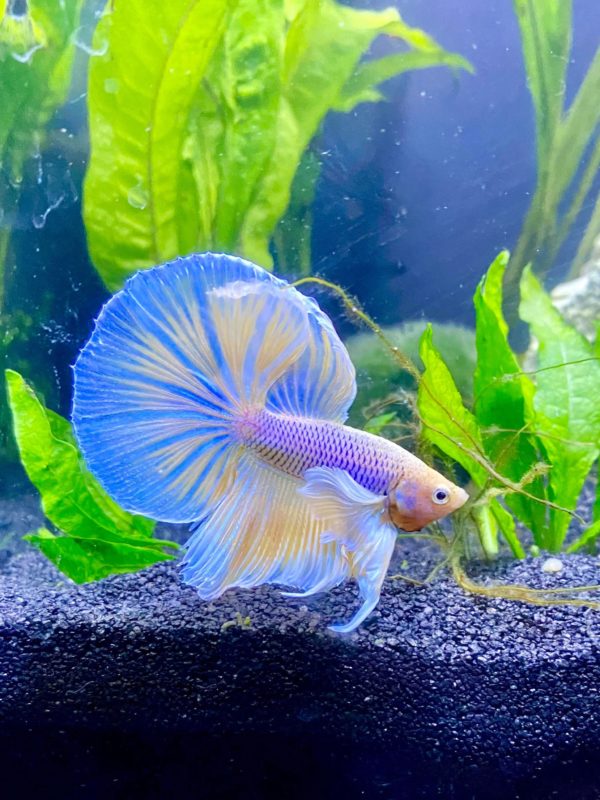
Are Elephant Ear Betta Right For You?
If you already have a community aquarium and the fish are thriving properly, adding an Elephant Ear Betta to your tank would not be a good alternative. With other species, they can behave aggressively, and you may end up with dead fish.
But if you have an empty aquarium or a female Elephant Ear Betta in the tank, you can keep an Elephant Ear Betta. You can choose to keep whatever Elephant Ear Betta fish you like in an empty tank, but the tank size should be 5 gallons or more.
They don’t require much maintenance, but that doesn’t mean you should not change the water frequently. Use a good filtration and heater to maintain the water parameters. Just follow the tips, and you can have stunningly beautiful fish.
FAQs
Is it easy to care for Elephant Ear Bettas?
Yes, most professional aquarists and better fish keepers have said that these species are easy to manage. As they come with a labyrinth organ, they can live in small tanks and water where the nutrient content is high. A 5-gallon fish tank can work well for your Elephant Ear Bettas. But don’t forget about regular tank cleaning, feeding, heating, and filtration systems.
Can They Survive In Tap Water?
Well, the answer is yes. Elephant Ear Bettas can survive in tap water, but you need to condition the water properly before adding it to the aquarium. There are many tap water conditioners available in the market under your budget.
If you plan to use purified water, it is advisable not to use RODI or distilled water. If you have a good aquarium materializer, you can go for it.
How Often Should I Clean Or Change Tank Water?
If you keep your Elephant Ear Bettas in a tank, you should change the water every 8 to 10 days. Some people keep them in a bow which can create stress in these fishes. Avoid such tank set-ups for your bettas. Try changing the water every other day to keep them healthy and active.
Conclusion
There is no doubt that Elephant Ear Bettas are one of the most unique and beautiful tropical fishes among enthusiasts and hobbyists. They can adapt to different colors and patterns, and they are very amusing to observe while swimming around in the tank.
Watching your Elephant Ear Bettas floating can be mesmerizing as they come with larger trails. Some aquarists and breeders have isolated a unique gene that can develop bigger pectoral fins.
If you have decided to get an Elephant Ear Betta for your home aquarium, offer them extra care by decorating the tank with good plants and tankmates. Your Betta will develop stunningly beautiful fins. Just keep the information mentioned in this article, and you will be able to take good care of your little Elephant Ear Bettas.
No related posts.

3 thoughts on “Elephant Ear Betta Care Guide: Diet, Diseases, Tank Set-up and More”
thank you for all information as I have just acquired an elephant ears Siamese fighter and have named him “Big Ears”, but would like to provide the best and safest environment for him.
I have a female Elephant ear betta, I will have her for 1 year this August. She has gotten thin which will be about a month soon. There are days when she doesn’t want to eat. I also have 3 tetra, a crown tail betta and another betta I do not know her type. Is there anything that is I should do to get her healthy again?
If my Betta (Female) swims or stays behind the heater is that alright? If she swims at the top of the aquarium is that alright?